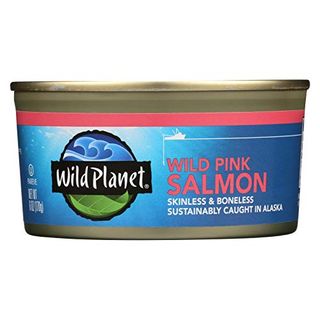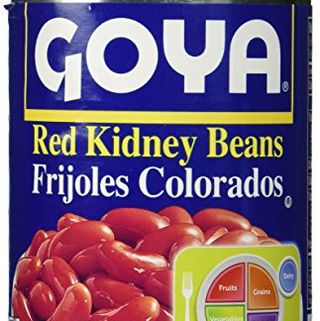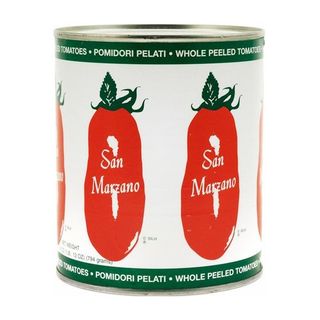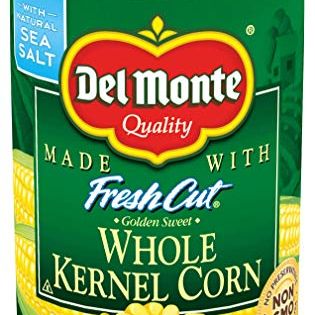Canned food can seem much less enticing than fresh options, but during this new reality, many of us are rethinking our shopping habits. A new study published in JAMA Internal Medicine found that 75 percent of people surveyed said they had stockpiled food in response to COVID-19. And data compiled by Nielson found that sales of many shelf-stable items have skyrocketed in recent times.
In the new normal, when it’s best to scale back on grocery store runs, many of us are learning that it’s key to stock our pantries with food that will last and provide nutritional benefits like canned foods.
It’s only natural to wonder if there are any nutrition or health downsides to eating more food stuffed into an aluminum can. After all, aren’t we always being lectured about the importance of eating more whole, fresh food for optimal nutrition, well-being, and performance on the saddle? So we checked in with two nutrition pros to suss out a canned food guide you can use to help power Zwift-athons and solo rides.
The Claim:
Canned foods are nutritional duds compared to their fresh counterparts.
The Evidence:
Good news for those of you who have stocked your pantry with towers of cans: Molly Morgan, R.D., C.D.N., C.S.S.D., of Creative Nutrition Solutions says there is no reason to turn up your nose at the food that comes in aluminum. “Many canned foods are typically still nutrient-rich because the canning process has less impact on nutrition than what many people believe.”
A good example is tinned fish: A 3-ounce serving of canned white tuna has about 20 grams of muscle-building protein, pretty much the same you’d get by reeling in a fresh option. Canned salmon, herring, and mackerel, for instance, are standout sources of the mega heart-healthy omega-3 fats, eicosapentaenoic acid (EPA) and docosahexaenoic acid (DHA).
Ounce for ounce, canned sockeye salmon also has levels on par with the amount you’d get from fresh salmon at the fish counter, whereas packed pink salmon harbors five times as much omega-3 fat than fresh tilapia. “And, if you buy canned salmon and sardines with edible bones that have been softened during the canning process, you’ll get much higher levels of bone-strengthening calcium than you would from fresh fish,” adds Morgan.
Another nutrition perk is a high level of vitamin D—a single can of sardines can deliver half your daily requirement for this immune-boosting nutrient. For better flavor and texture, Morgan advises seeking out brands like Wild Planet that only can fresh seafood instead of using fish that has been frozen first.
Other not-so-fresh options you can’t go wrong with is canned beans. “If you’re looking for a nearly complete nutritional package, then it’s beans to the rescue,” says Morgan. “Canned beans are a great and inexpensive source of plant-based protein and fiber to help reduce hunger, and they also deliver many key vitamins and minerals for athletes including potassium, iron, copper, and magnesium.”
Morgan adds that kidney, navy, and other beans can help support your gut health by delivering prebiotics, which are non-digestible carbohydrates that serve as fuel for the good bacteria (probiotics) in your gut. An added bonus? Research shows that canned beans, especially darker varieties such as black and kidney, possess high levels of polyphenol antioxidants which may help prevent cancer. Morgan stresses that, save for sodium, any nutritional differences between dried and canned beans are negligible. “It is estimated that draining and rinsing canned beans will reduce sodium levels by 40 percent.” Beyond bloating, a in the journal Nature suggests excessive salt intake could impair brain functioning.
“When it comes to sodium, there are ‘no sodium’ and ‘lower in sodium’ canned varieties you can look for,” advises Jones. But then again, she says if you’re engaging in high levels of endurance exercise like sweat-fest virtual races, then you can likely fret less about the sodium in your canned chili or diced tomatoes since it will go towards replenishing what you lose with elevated perspiration rates and help encourage better fluid retention.
Board-certified sports dietitian Kelly Jones, M.S., R.D., C.S.S.D., adds that canned options can be more nutrient-dense than fresh produce when you’re enjoying a canned fruit or vegetable that is not in season locally and otherwise would have taken a while to make it to your plate after harvest. “These are processed and canned within hours of being harvested which preserves many of their nutrients,” she says.
Separate studies from Michigan State University and the University of California, Davis backs this up by showing that long-lasting canned (and frozen!) vegetables and fruits are not only more economical than fresh, but also very comparable nutritionally.
For instance, green peas are a great source of bone-benefiting vitamin K, while tinned pineapple supplies all the hunger-smashing dietary fiber you’d find in fresh. Canned corn has been shown to contain the same levels of healthful carotenoid antioxidants like lutein as its fresh counterpart. One study determined that adults and children who typically eat canned fruits and vegetables had a higher intake of certain vital nutrients like potassium and magnesium as well as a higher-quality diet overall compared to those who shun them.
And you can feel good about taking a shortcut and using canned tomatoes for your next batch of pasta sauce or chili. “Lycopene, a phytochemical carotenoid that is associated with both lower risk of stroke and heart disease as well as lowered risk of prostate cancer in men, is more bioavailable in canned versus fresh form,” explains Jones. When tomatoes are cooked for the canning process, lycopene becomes easier for our bodies to absorb, she adds. (Another win for Team Canned). Plus, tomatoes in canned form can taste a lot more like summertime than off-season mealy fresh versions.
Still, you shouldn’t rely solely on canned foods to get all your nutrients. “While the majority of nutrients are well preserved—including minerals, fat-soluble vitamins, and many phytochemicals—due to the high heat treatment needed to kill microbes, certain heat-sensitive water-soluble nutrients, such as vitamin C and thiamin, can be reduced,” explains Jones.
With that said, she wants you to remember that some cooking methods used with fresh vegetables that might not be employed with canned, such as boiling, can also cause nutrient loss. And those limp, past-their-prime green beans in your fridge aren’t exactly at their nutritional peak.
A good general rule of thumb is that if a fruit or veggie is in peak season and available, go ahead and eat it fresh—it’ll be more flavorful. For other times, simply try to eat a variety of veggies and fruits overall, even if they come in a can.
[Find 52 weeks of tips and motivation, with space to fill in your mileage and favorite routes, with the Bicycling Training Journal.]
When it comes to fruit, Jones is an advocate for those canned in their own juices, but says you’ll still obtain nutrients if you can only find versions that are packed in syrup. “You can drain off the syrup and even rinse the fruit if you’d like to do without it and reduce some sugar calories.”
Moreover, some cans are lined with bisphenol-A, a chemical better known as BPA that, despite being deemed safe in typical consumption amounts by the FDA, has been associated with a heightened risk of heart disease and even weight gain with high exposure, and both the acidity of the produce like tomatoes, and the heat from sterilization can encourage BPA to leech into the food.
A recent report by The Lancet suggests that the analytical techniques used to estimate BPA’s impact on human health may be flawed. “Still, the nutrient density and antioxidant benefits of eating fruits, vegetables, and beans likely exceed the risk of BPA exposure,” says Jones. But if you feel uneasy about eating any amount you are in luck since a number of brands—including Wild Planet, Muir Glen, and Trader Joe’s—advertise as being BPA-free. You can also search the Environmental Working Group’s Food Scores site to find out if a brand you like is suspected to use BPA.
The Verdict
Both of our experts agree: When it comes to eating canned fruits, vegetables, beans, and seafood, there aren’t too many bad choices.
There is, of course, nothing to match eating a salad full of farm-fresh greens or topping oatmeal with slices of in-season peaches, and you shouldn’t live solely on a non-perishable diet, but the nutritional trade-offs between fresh and canned aren’t worth stressing about in a time when there is plenty of other stuff to fret over. Ultimately, during periods when fresh options are scarcer or out-of-season, you can still get plenty of nutrition from canned foods.




